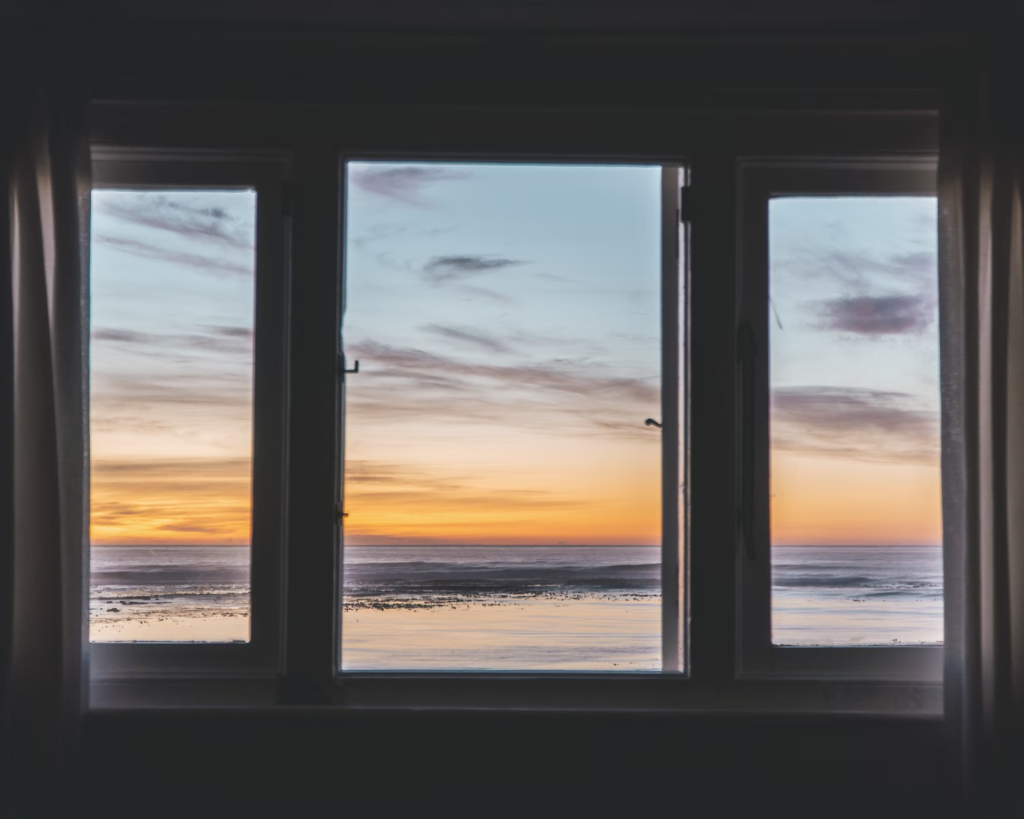Double glazing is an increasingly popular choice for homeowners looking to improve energy efficiency, reduce noise, and enhance security in their homes. The process involves installing two panes of glass with a gap in between, creating an insulating barrier.

While double glazing offers numerous benefits, it also requires specific materials to ensure the best results. In this article, we’ll explore the essential materials needed to install double-glazed windows, and how each contributes to the performance and longevity of the windows.
Materials Needed For Double Glazing Windows
Glass
The glass used in double glazing is critical to the overall performance of the window. Typically, two panes of glass are installed with a gap between them. The choice of glass depends on the purpose of the double glazing, whether for insulation, soundproofing, or security.
Types Of Glass:
- Float Glass: This is the standard type of glass used in double glazing. It is made by floating molten glass on top of molten metal, creating a uniform thickness.
- Low-Emissivity (Low-E) Glass: This type of glass has a special coating that reflects heat into the room during winter, while also blocking heat from entering during summer. Low-E glass helps improve the energy efficiency of your home.
- Laminated Glass: Consisting of two or more layers of glass bonded with a plastic layer, laminated glass is stronger and offers better security as it is harder to break. It also provides excellent soundproofing qualities.
- Toughened Glass: Also known as tempered glass, this type of glass is heat-treated to make it stronger and more durable. It is designed to shatter into small, non-sharp pieces when broken, making it a safer option.
The thickness of the glass panes typically ranges from 3mm to 6mm, though thicker glass can be used for additional soundproofing or security.
Spacer Bars
Spacer bars are used to separate the two panes of glass in a double-glazed window. They are crucial for maintaining the gap between the glass and ensuring the overall insulation properties of the window.
Materials For Spacer Bars:
- Aluminium Spacer Bars: Aluminium is a common material for spacer bars due to its strength and relatively low cost. However, aluminium can conduct heat, so it is not the best option for insulation.
- Warm-Edge Spacer Bars: These spacer bars are made from materials with lower thermal conductivity, such as plastic, silicone, or stainless steel. They help reduce heat loss and improve the thermal performance of the window.
- Polymer Spacer Bars: Made from a blend of plastics, polymer spacer bars are excellent at reducing heat transfer, ensuring better insulation and less condensation between the panes of glass.
The width of the spacer bar gap typically ranges from 12mm to 20mm, although it can be customised depending on the insulation requirements.
Sealants
Sealants are essential for keeping the double-glazed unit airtight. Proper sealing ensures that the window performs well in terms of thermal insulation and soundproofing, and also prevents condensation from forming between the glass panes.
Types Of Sealants:
- Silicone Sealants: Silicone is one of the most common sealants used in double glazing due to its flexibility, weather resistance, and durability. It creates a strong bond between the glass and the spacer bars.
- Polyurethane Sealants: Polyurethane sealants offer excellent adhesion and are often used in more demanding environments. They are durable and resistant to moisture and temperature fluctuations.
- Butyl Sealants: Butyl sealants are commonly used as primary seals in double glazing. They are highly effective in creating an airtight seal and preventing moisture from entering the gap between the panes.
A high-quality sealant is crucial for ensuring the longevity of the double-glazed unit and preventing issues such as condensation or air leakage.
Gas Filling (Argon Or Krypton)
To further improve the insulation properties of double-glazed windows, a gas such as argon or krypton is inserted between the two panes of glass. These gases are denser than air and have better insulating properties, helping to reduce heat loss.
Argon Gas
Argon is the most commonly used gas in double glazing. It is odourless, colourless, and non-toxic, and it helps improve the thermal efficiency of windows. Argon is also relatively inexpensive.
Krypton Gas
Krypton is more expensive than argon but offers better insulation properties. It is typically used in situations where a thinner gap between the glass panes is required, such as in triple glazing or smaller window units.
The gas filling significantly improves the energy efficiency of the window and can help maintain a more comfortable indoor temperature year-round.
Frame Materials
The material used for the window frame is an important consideration in double glazing. The frame needs to be strong, durable, and thermally efficient to ensure that the window performs well.
Common Frame Materials:
- uPVC (Unplasticised Polyvinyl Chloride): uPVC is a popular material for double-glazed window frames due to its low maintenance, excellent insulation properties, and resistance to the elements. It is also relatively cost-effective.
- Timber: Timber frames are often chosen for their aesthetic appeal and natural look. They provide good insulation but may require more maintenance than uPVC. Timber frames can be treated to increase their durability and resistance to the elements.
- Aluminium: Aluminium frames are strong, lightweight, and durable, but they are not as thermally efficient as uPVC or timber. However, thermally broken aluminium frames (which include an insulating material between the internal and external sections of the frame) can significantly improve insulation.
- Composite Frames: Composite frames combine the best features of different materials, such as timber, uPVC, and aluminium. These frames provide excellent insulation, strength, and aesthetic appeal.
The choice of frame material will depend on factors such as the climate, aesthetic preferences, and budget.
Desiccant
Desiccant is a moisture-absorbing material that is placed inside the spacer bars to absorb any moisture that may accumulate inside the double-glazed unit. This helps prevent condensation from forming between the panes of glass and ensures that the gas filling remains effective over time.
Common Desiccants Include:
- Silica Gel: This is the most commonly used desiccant in double glazing. It is effective at absorbing moisture and maintaining the integrity of the unit.
- Molecular Sieves: These desiccants are more effective than silica gel at absorbing moisture, especially in high-humidity environments.
Desiccants help maintain the insulating properties of double-glazed windows and prevent issues such as fogging between the panes.
Spacer Sealant
Spacer sealant is used to attach the spacer bars to the glass panes, creating an airtight bond. This material is essential for ensuring that the double-glazed unit remains intact and free from air or moisture infiltration.
Types Of Spacer Sealants:
- Hot Melt Sealants: These are applied in a molten state and harden after cooling. They are typically used for their durability and ability to create a strong bond.
- Cold Applied Sealants: These sealants do not require heat to cure and can be used in various applications where heat might damage the other materials.
Spacer sealants play an important role in the durability and effectiveness of double glazing.
Manufacturing And Installation Tools
Finally, installing double-glazed windows requires a range of tools and equipment. These tools help ensure that the materials are properly assembled and installed.
Tools Required:
- Glass Cutting Tools: Precision cutting tools are necessary to cut the glass to the correct size and shape for the window unit.
- Sealing Guns: These are used to apply sealants and adhesives around the edges of the glass panes and spacer bars.
- Gas Filling Equipment: Special equipment is required to inject the argon or krypton gas between the glass panes and ensure an airtight seal.
- Pressurising Tools: These tools are used to apply the appropriate pressure during installation to ensure a tight seal and proper fitting of the double-glazed window.
Using the right tools and following proper installation techniques is crucial to achieving the desired performance and longevity of double-glazed windows.
Conclusion
Double-glazing windows are an effective way to improve energy efficiency, reduce noise, and enhance security. To create a high-performing double-glazed window, a variety of materials are needed, including glass, spacer bars, sealants, gas fillings, desiccants, and frames.
The careful selection and combination of these materials ensure that the window performs optimally in terms of insulation, durability, and overall function. Whether you’re looking to install double glazing for the first time or replace existing windows, understanding these materials will help you make informed decisions and achieve the best possible results for your home.
Frequently Ask Question
Is It Possible To Replace Just One Pane Of Double Glazing?
In some cases, it is possible to replace just one pane of glass in a double-glazed window, but the entire unit usually needs to be replaced if the seals are damaged or the gas filling is compromised. If condensation or fogging is visible between the panes, this indicates that the insulating properties have been lost, and replacing the whole window is typically the best option. Replacing only one pane may not restore the thermal or acoustic performance.
What Are Spacer Bars And Why Are They Important?
Spacer bars are used to separate the two panes of glass in a double-glazed window and help maintain the insulating gap between them. They are important because they affect the thermal performance and overall durability of the window. Spacer bars are made from materials such as aluminium, plastic, or polymer, and their choice can influence factors like heat loss and condensation.
How Can I Improve The Energy Efficiency Of My Double Glazing?
To enhance the energy efficiency of double glazing, choose windows with Low-E glass coatings, which reflect heat into your home. Opt for high-performance spacer bars made from materials with low thermal conductivity to reduce heat loss.
You can also consider filling the gap between the panes with argon or krypton gas for better insulation. Ensuring the window seals are intact and free from damage is another important factor in maintaining efficiency.
Click How To Install Double Glazed Windows For More Details
